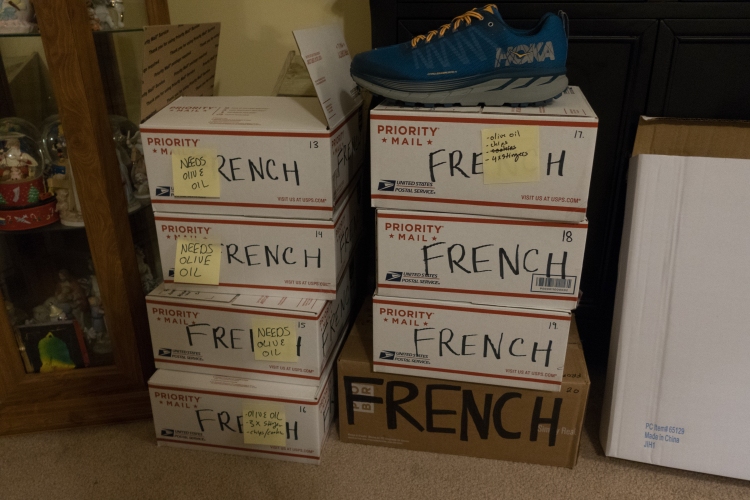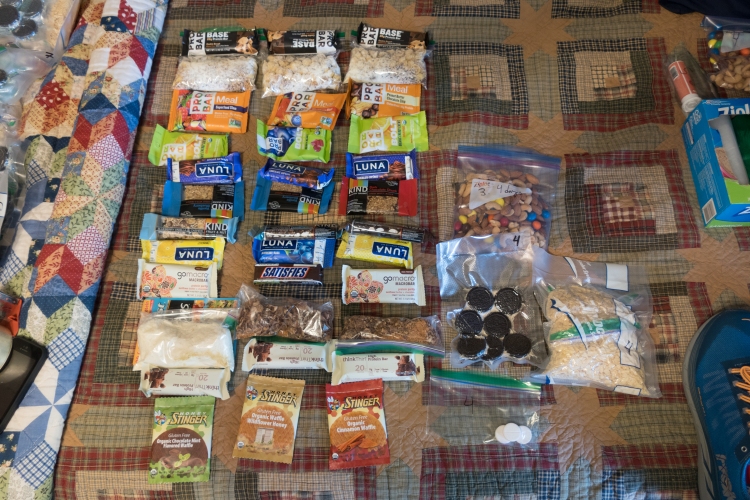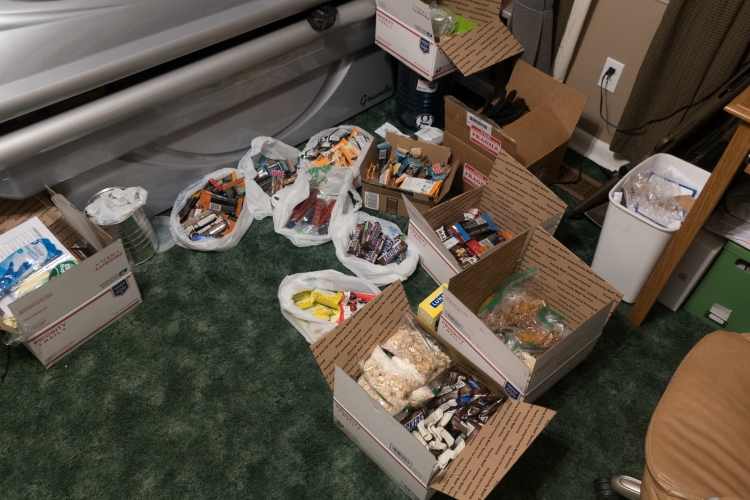
Initial Thoughts –
I thought about hiking the PCT for a year before committing to it, then it was nearly another year before I began walking. Celiac disease is why it took me as long as it did. I got diagnosed in 2014 after nearly two years of unexplained symptoms. Apart from the unfathomable itching, getting only 3-4 hours of sleep a night during my first year in NY was torture, and I know I did plenty of damage to my body during that time given that I was working at a sandwich shop, and eating a lot of cheap wheat-based products. I had started hiking at this point, and was figuring out what kind of hiker that I wanted to be. After a while, the weekend thing wasn’t enough, and eventually I settled on the PCT.
I was listening to The Adventure Sports Podcast, and Shawn Forry was the guest. Shawn Forry, along with his hiking partner Justin Lichter, thru-hiked the PCT southbound during the winter. They are the first and only hikers to complete it. At the end of the podcast, Shawn mentioned that he had celiac disease, and put out an open invitation for anyone needing advice to ask for it. I was nervous about how I would eat safely along the trail, so I emailed Shawn seeking guidance, and he really pushed me over the edge to commit to the hike. He didn’t share anything that eye-opening, but due to his extensive backcountry experience on long trails, I knew I could hike the trail. I’m not sure how much he uses resupply boxes, but I went pretty much exclusively that route.
Resupply Boxes –

Despite the popularity of buy-as-you-go, I chose to go the box route because of my dietary requirement. The PCT goes through mostly small towns with small grocery stores with few hiker-friendly AND celiac friendly foods. Many people don’t realize that a celiac cannot eat gluten free food that has been processed on the same equipment, and often in the same factory or prep space as products containing gluten. That is pretty much every affordable bar. That 88 cent Cliff bar? Nope. Those oats are not certified gluten free, and they were probably harvested from a field bordering wheat or barley crops. Some towns didn’t have more than a Dollar General or gas station. Those stops just won’t cut it, and often the large grocery stores wouldn’t either.
The November before my hike, I began estimating calorie needs, recording cal/oz of snacks at the grocery store on a spreadsheet, and ordering food in bulk online when companies put a sale on the items I wanted. Most of the online buying was finished before Spring, but there was still a good chunk left to pick up fro brick and mortar stores. I didn’t have enough room in my Brooklyn apartment to organize all of the food, so I had been sending it to my parents’ home in TN. I flew there just two weeks before I started the PCT, and finished the purchasing, organizing, and packing, with help. I would have lost my mind doing it all in two weeks alone. My mother was my resupply manager, and mailed out my boxes with my master spreadsheet as a guide.

Once the work was done, resupply boxes were great on trail. The bulk of my food spending was done, I didn’t need to stress about resupplying in town, and all of my toiletries were there in the appropriate size/amount for the amount of days I’d be hiking until my next resupply. It saved me weight and waste, but in the end, probably not much money. Shipping boxes is expensive. One reason to buy in bulk in advance, and during sales to widen your margin of savings.
Restaurants –
Eating restaurant food is a big morale boost, and helps bridge the calorie deficit for thru-hikers. Hiking anywhere from 25-40+ miles per day, it’s tough to stay ahead of the calorie game. It’s too heavy, and, in my experience, there’s only so much processed bars and dry food that I can eat. Restaurant food was my biggest anxiety as my thru-hiking date closed in, and was the main point of stress throughout my hike. A notable low point was coming into Steven’s Pass, looking forward to eating at the one restaurant that was confirmed safe, and learning that it was closed one day a week, on Mondays, when I was arriving. People kept telling me to try the pizza because it was “so good.” I picked up a new jar of peanut butter and jetted out of there back on trail.
When I was diagnosed with celiac disease in 2014, I had atypical gastrointestinal symptoms, which is rare, but the norm for people who have dermatitis herpetiformis. Those that have DH also have celiac, but not the other way around. DH affects ~10% of celiacs, and is truly a life-altering itch. There’s a medicine that curbs the itch and breakout of DH, but it doesn’t stop the damage from occurring in the intestine, however. The year leading up to my hike, I started experiencing the conventional GI issues: diarrhea, sharp stomach pain, bloating, and it would last anywhere from a few hours to all day and night, plus a sort of fog/hangover the following day.
If I remember correctly, I was glutened just 4 times, all of them in California (big state). The first time, in Idyllwild, wasn’t so bad. It’d been a while since I’d encountered cross contamination. I had a stomach ache all day, and slept it off that night. The worst episode was after accepting trail magic that I shouldn’t have. I was having a hard day, and I walked up on trail magic with at least 15 people there enjoying hot-cooked food. The guy dishing out the trail magic confirmed that it was gluten free and that he understood celiac. I accepted a slice of “gluten free” carrot cake, and paid dearly for it. I was about 45 miles away from town when it hit me, South Lake Tahoe. It was a brutal night. The upside to this story, South Lake Tahoe had celiac-safe pizza, wings, burgers, fries, and vegetable plates. It was my longest stay in a town, two full days.

My usual method for eating in town was to use the Find Me Gluten Free app. If there were no hits on there, I’d look to Yelp and other travel sites to find any comments about gluten awareness in the restaurants, and search for restaurant menus to see how bread heavy they were. My best bet when there was nothing on the app was to find Thai food. Rice-based, and often cooked with tamari rather than soy sauce. The next best was Mexican. Or broth restaurants, of which there are none along the PCT corridor until Washington (shout out to Leavenworth).
I don’t think there’s much I would change food wise the next round of thru-hiking as far as navigating celiac disease. I’ll continue to send myself resupply boxes, and I’ll continue to get glutened at restaurants. It’s part of the cards I’m dealt, and it makes my thru-hike uniquely my own. Walking’s the easy part.
1 comment